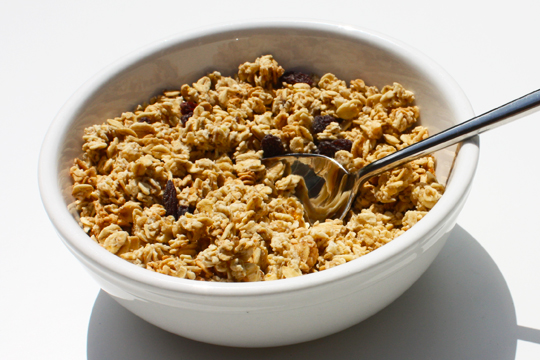
Reducing Food Waste in Foodservice
October 16, 2018 by Doreen Garelick, Dietetic Intern
Our intern Doreen attended a food waste summit for restaurants and compiled these tips to help food service operators redirect…
Nutrition 101
February 19, 2013

Dietetic Intern Felicia Benincasa explains the role of fiber in relation to heart health and suggests some simple ways to increase your intake.
The fiber we consume is called dietary fiber, also known as roughage or bulk. It is made up of plant materials, which unlike other food components, cannot be digested in the human body. Fiber can be classified as soluble or insoluble, each performing different functions. The USDA recommends 25-35g of fiber per day for the average adult, however many Americans are only consuming 10-15g per day.
Soluble fiber has been top-of-mind recently as it plays a role in heart health. It has been proven to lower LDL or “bad cholesterol” levels, reduce blood vessel inflammation and blood pressure. When there is an excess of cholesterol -- a soft waxy substance present in fats found in the blood stream and cells -- it can build up on the artery walls, causing detrimental effects to your health.
When food is consumed, the liver releases bile to help digest food. Soluble fiber interferes with the absorption of bile and cholesterol, decreasing the amount entering the bloodstream. This is good news for your heart: with less “bad cholesterol” floating around in your blood, less gathers on your artery walls.
When most people hear the word “fiber” they think of products like Metamucil, Benefiber, Citrucel and fiber bars. While these products do contain fiber, there is a healthier and tastier option: from natural, whole foods. Eating a variety of fruits, vegetables, legumes, nuts and whole grains will allow you to consume the recommended amount of fiber each day while also providing you with healthy vitamins and minerals. A ¾ cup of oatmeal will provide you with 3 grams of fiber, whereas it will take 3 tablets of a fiber supplement in order to get the same amount. Here are a few easy ways to add fiber to your diet:
It is important that you gradually increase your intake of fiber and remember to drink plenty of water to avoid bloating or digestive issues!
Are you getting enough fiber? Let us know some tasty ways that you increase your fiber intake in the comments below.

October 16, 2018 by Doreen Garelick, Dietetic Intern
Our intern Doreen attended a food waste summit for restaurants and compiled these tips to help food service operators redirect food waste from landfills.
Nutrition 101

Nutrition 101
September 26, 2018 by Doreen Garelick, Dietetic Intern
Ever notice headlines about rapid weightloss? Dietetic Intern Doreen Garelick looks deeper into a recent eye-catching headline to see if there's any truth behind it.
Connect
 Follow us on Twitter
Follow us on Twitter Friend us on Facebook
Friend us on Facebook Follow us on Pinterest
Follow us on Pinterest Follow us on Instagram
Follow us on Instagram Read our Blog
Read our Blog Watch videos on YouTube
Watch videos on YouTube Watch videos on Vimeo
Watch videos on Vimeo Connect with us on Linkedin
Connect with us on Linkedin Find us on Foursquare
Find us on Foursquare
Tweets by @SPEcertifiedBlog Search
Categories
SPE Certified Newsletter
Sign up for news on the latest SPE-certified venues, events and SPE updates.
We will never share your personal information with a third party.